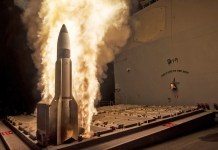As the US remains the undisputed leader in stealth fighter jets including F-35 and F-22 Raptors, there are claims that new Chinese “anti-stealth” radars and Russia’s Struna-1 system can easily detect American stealth fighters.
The Chinese PLA had recently showcased their new SLC-7 and YLC-8E anti-stealth radars, The EurAsian Times reported.
Russia has had its fair share of experience in developing air defense systems, including the much-publicized S-300 and the S-400, which boasts the capabilities of intercepting ballistic missiles with a range of 3,500 km which equates to re-entry speeds of 4.8 to 5 km/s.
China On-Course To Make ‘Trillion Dollar’ F-35 Jets Useless With Its Stealth Detecting Radars
These are an integral part of Russia’s ballistic missile defense systems, incomparable with any other defense systems globally. The S-400 is stated to have an “anti-stealth” targeting capability of 150-400 kilometers using its 91N6E panoramic radar and Protivnik-GE UHF radars.
However, there is one more sensor in its arsenal different from other conventional systems, named the Struna-1/Barrier-E bistatic radar developed by Almaz-Antey joint-stock company.
Based on the bistatic radar technology, the first variant of the Struna-1, also designated as the 52E6, was completed in 1999 and has been upgraded over the years with new innovations.
The Barrier-E version was first showcased at MAKS 2007, a biennial international aviation and space exhibition.
These radars, reportedly capable of detecting low observable flying aircraft like the fifth-generation systems, with a coverage of over 400 kilometers for the export version, called the Barrier-E. The current in-production version for the Russian armed forces is designated the 52E6MU.
Bistatic Radars
It is a radar system comprising a transmitter and receiver that are separated by a distance comparable to the expected target distance. The normal radar systems are limited by the inverse fourth power law, and as the radar target goes further away from the transmission source, the strength of the radar signal decays as per the regular inverse square law.
In a conventional monostatic radar where the transmitter and receiver are placed at the same location, it relies on the reflected radar waves from aircraft to determine its position.
However, the Struna-1 can have its transmitter and receiver placed as far as 50 kilometers away, and have more power as compared to conventional radars, and allows more coverage as it detects even those waves deflected by stealth aircraft.
This setup reportedly increases the radar crosssection of an aircraft by three times. One major feature is that the radar transmitter/receiver towers used in Struna-1 have low power consumption and don’t emit as much radiation making them less vulnerable to anti-radiation missiles.
This network of modules is connected to a central monitoring system which could be located a significant distance away from the towers, connected by microwave data links.
However, the coverage of this radar system is parabolic, with a low detection altitude — and can detect targets at a maximum height of 7 kilometers due to the small height of towers.
The width of the single-span coverage footprint is between 1.5 and 8 km, subject to the target type and distance from the transmit antenna. Altitude coverage is between 30 m and 7 km.
Contrary to popular belief, the contemporary ‘stealth’ concept is more of becoming low-observable rather than being ‘invisible’ to the radars. Detecting stealth aircraft is not impossible, but is certainly hard which can be done via new innovations and techniques.
Even if the radar detects the aircraft, the interceptor aircraft with IRST sensors can be directed towards the probable location to identify and score a hit.
While Russia and China struggle hard to make their own fifth-generation aircraft, their focus on countering the American F-22/F-35 fleet also depends on developing systems capable of detecting and guiding assets towards the detected aircraft.
Aerial warfare is always about who counters whom — the air defense technology versus aircraft technology.





